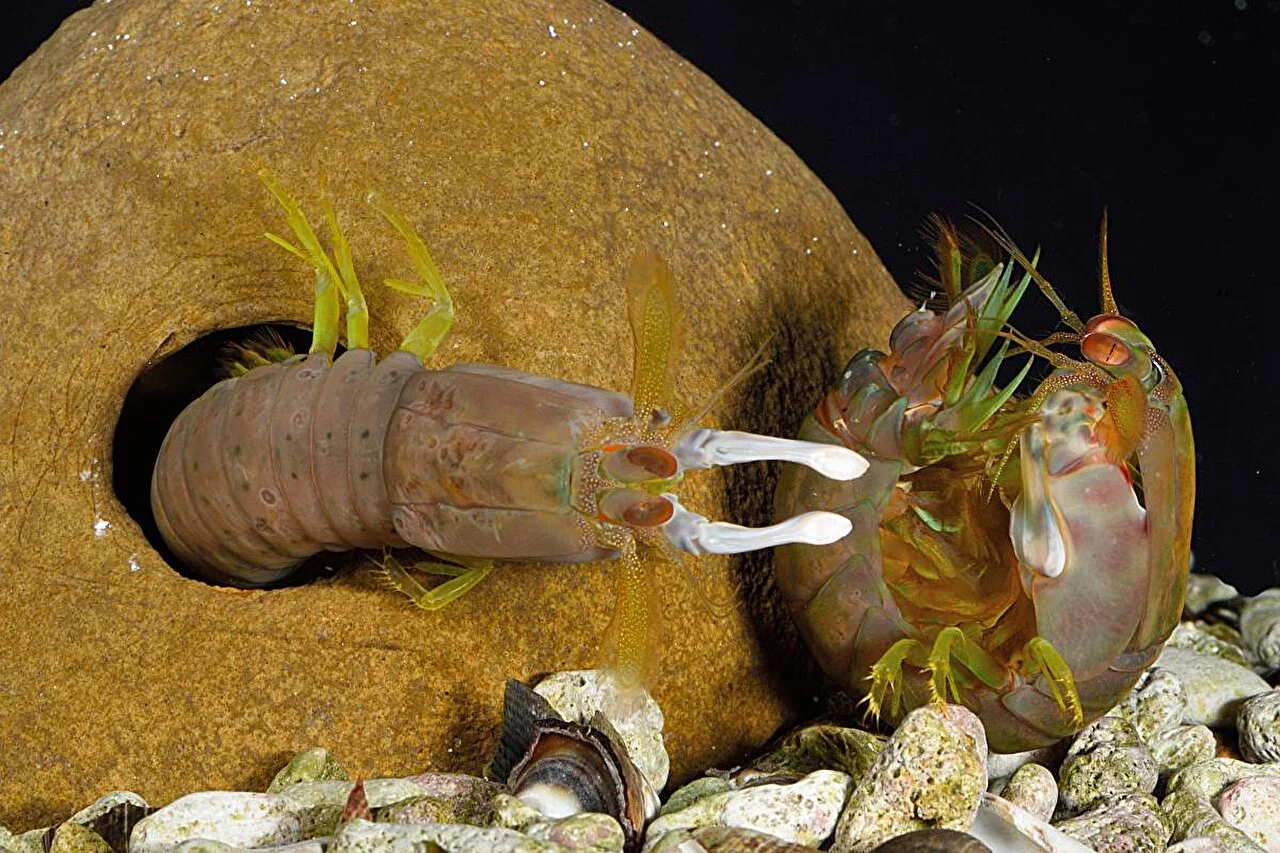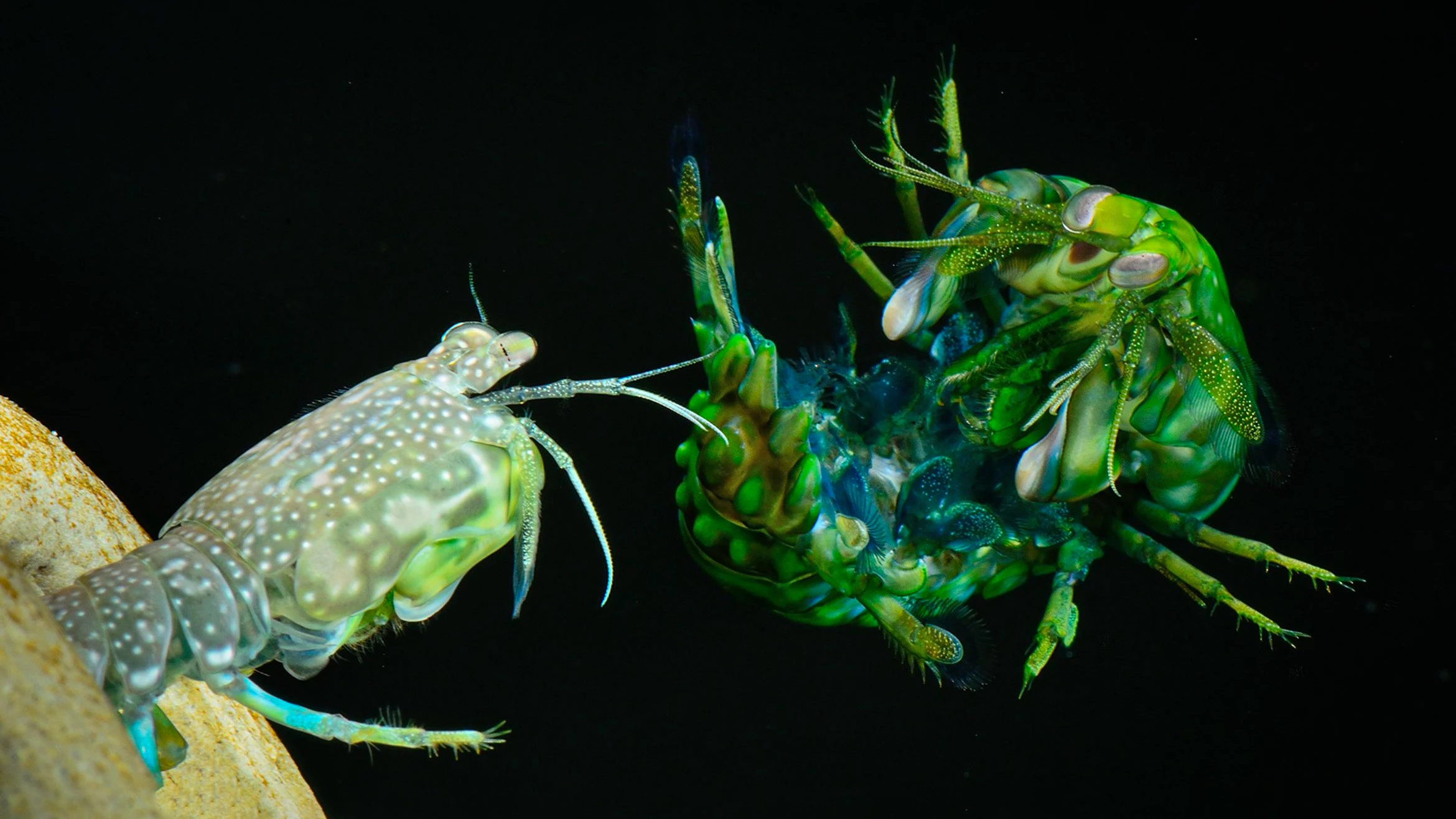If you have even a casual curiosity about the angriest crustacean on the planet, you'll know that the infamous mantis shrimp is in possession of a club-shaped claw that can deliver punishing blows to everything from hard-shelled prey to thick aquarium glass.
So what happens when they strike out at a fellow mantis shrimp foe with this 23 m/s brute force of a punch? Well, thanks to some rather violent new research – all in the name of science, of course – we now know.
University of California, Santa Barbara ecologist Patrick Green has managed to capture not just some incredible images and footage of two territorial mantis shrimp coming to blows, but has let the world in on the tiny but mighty animal's way of blocking a hit that's the equivalent of a 22-caliber bullet being fired at close range.
“In mantis shrimp, competitors exchange bullet-like hits on each other’s armored tail plates, or telsons, during fights over shelters,” Green explained. “In natural fights, we see mantis shrimp coil their tails in front of their bodies like a shield."
Eager to find out how reef mantis shrimp (Neogonodactylus bredini) were able to handle a brutal strike from another without being shattered into pieces, Green discovered that the defending animal was able to engage its tail, and take a boxer-style approach of absorbing the hit, to diffuse the attacker's power. How did he find out? By making two shrimp punch on, of course – and filming it in super-slow motion.
"I wanted to know how this behavioral use of the tail changed how they receive impacts," he said.
Two territorial shrimp were introduced to each other, and nature quickly took its course; "they almost immediately started hitting each other," said Green. But the ecologist was able to capture the insanely fast and powerful strikes by filming at 30,000-40,000 frames per second, around 1,000-times faster than a regular camera.
They almost immediately started hitting each other.
Previous studies had isolated the tail's curl – or telson coil – as key to surviving 'friendly fire' from an aggressive and territorial mantis shrimp, but this latest research has accurately measured just how effective this natural shield and rapid-fire reaction is.
After all, the attacking strike moves so quickly that it briefly vaporizes the water in front of the punching club, seen here.

Analyzing movement, energy exchange and impact, Green found that the defending mantis shrimp was able to shock-absorb and diffuse around 90% of the attacking club's force. Key to this was the animal curling its telson and remaining suspended in water, all limbs off the seabed, to all but render the incoming blow powerless.
“It made logical sense to me that holding your armor off the ground should let you dissipate more energy,” he said. “Think about a boxer moving with a punch that they receive.”
While animals (humans included) fighting their own species over territory, resources or mates is certainly not new, this study offers fascinating insight into how it's not just what you have, but how you use it. Particularly if your attacker is armed with an otherwise deadly weapon.

“When we try to understand how animals contend with impacts, we should think about both the structures they use (like armor) and also how they use those structures,” Green said. “This study helps us connect behavior and morphology, so we can better understand how animals navigate their fights.”
Meanwhile, the shrimp's strong carapace, which protects its vulnerable, soft invertebrate body, is already a huge area of interest in the development of light, tough materials. Their famous eyesight is another 'superpower' scientists are hoping to harness for other applications.
There are around 400 species of mantis shrimp we currently know of, so it may be some time before we have a Street Fighter-style database of attack and defense stats for all of these big hitters.
The study was published in The Journal of Experimental Biology.





